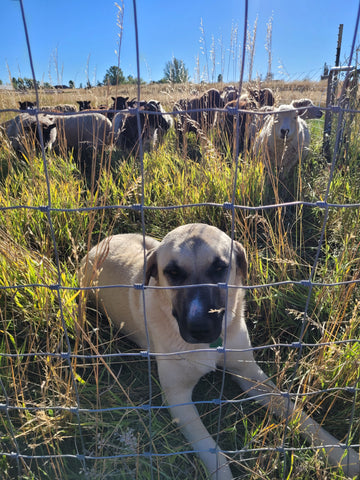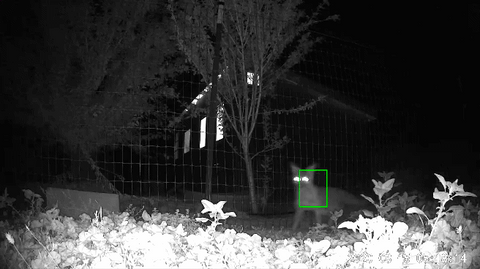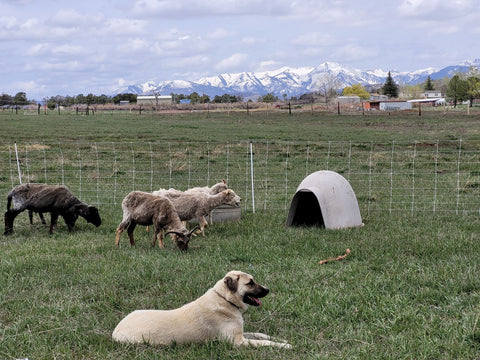Predator-Friendly Farming February 25 2024
Sustainability and environmental conscientiousness are important values for our family, and we extend that focus to our farm as well. When raising livestock that are technically prey in a wild ecosystem, we have to address how to handle predators that will be drawn to our animals. We feel we must coexist with the wildlife in and around our farm, including predators, instead of taking a lethal approach to predator control.
What does coexisting with predators look like? It depends on the livestock and the predator. For us, our predators are primarily skunks, raccoons, foxes (both red and gray), coyotes, and bears. There is a saying that where there are mule deer, there are mountain lions, but even with the large number of deer that enjoy our farm, we haven't seen any signs yet. Our three main lines of defense are closing our animals in at nighttime, Pinky our Livestock Guardian Dog (LGD), and electric fencing.

Pinky, our Anatolian Shepherd LGD with our grazing sheep.
Our ducks and chickens are our most vulnerable livestock. Closing them in their predator-proof coop at night prevents opportunistic predators like skunks, raccoons, and foxes from snatching them while they sleep. We prefer to have our poultry free-range in our pastures to diversify their diet, improve their health, and help with pests on the farm, but foxes are very smart and will prey on poultry during the day if the opportunity presents itself. Since we brought Pinky to our farm in the spring of 2023, we have been able to range our chickens and ducks without any losses. We're thrilled, as we had struggled with free-ranging our poultry because the foxes took every opportunity to nab a duck or chicken for their family of kits.

A gray fox in front of our "Fort Knox" chicken coop.
Our sheep have a secure barnyard where we pen them during the night. This protects them from all but the most determined large predators. Pinky's night pen is right between the ewes' and rams' pens to provide a protective presence for both areas. She also wards off foxes from getting too close to the chicken coop, although they know exactly where she can and cannot patrol.

A beautiful red fox keeps triggering our camera this winter, just beyond the limits of Pinky's night pen.
When grazing during the daytime hours, our sheep are most vulnerable to stray dogs, although we can't rule out coyotes. We use electric netting to create grazing paddocks and Pinky stays with them as well. This electric netting not only allows us to rotationally graze our pastures for better soil, forage, and animal health, but it also provides a solid line of defense against larger predators.

Pinky keeping watch while our sheep graze.
Interested in learning more about predator-friendly farming and farming with the wild? Check out the Wild Farm Alliance and Wildlife Friendly Enterprise Network.
- Kelsey
